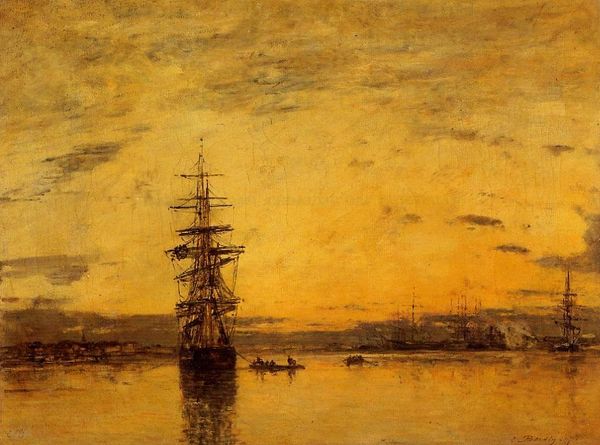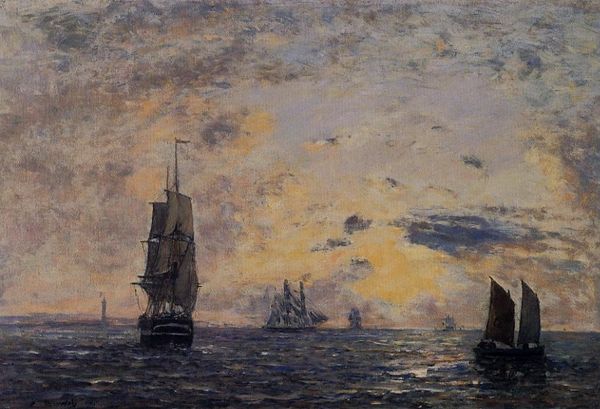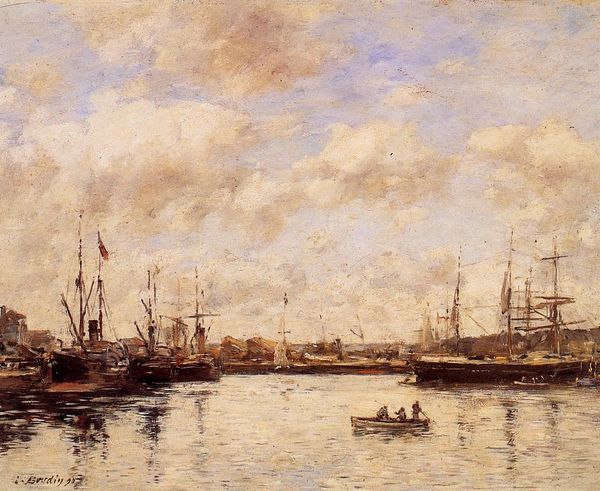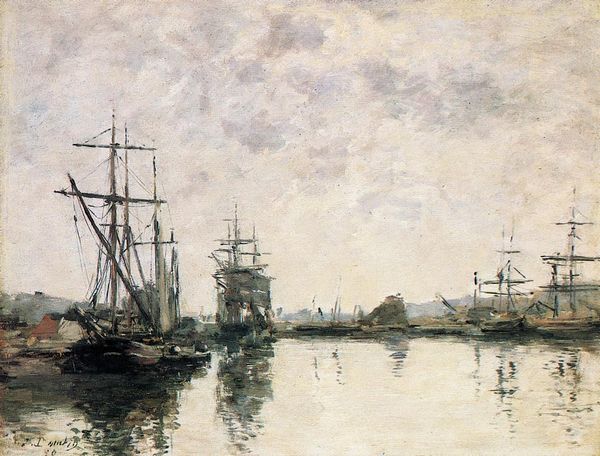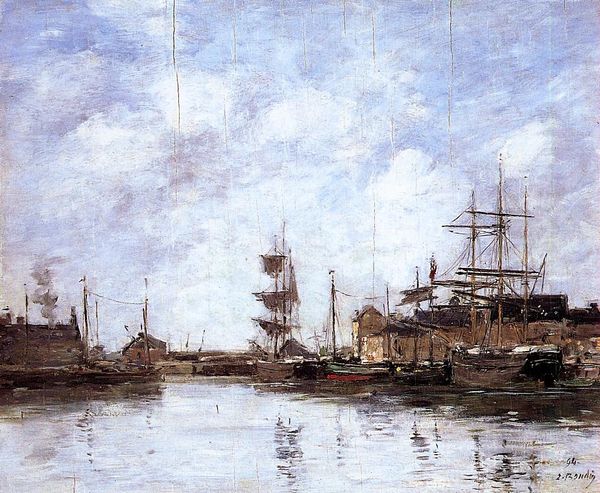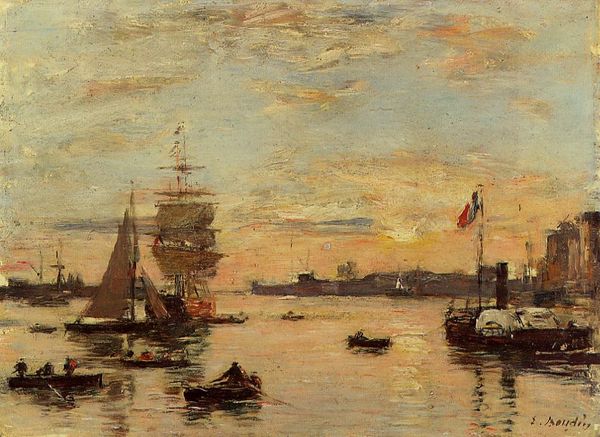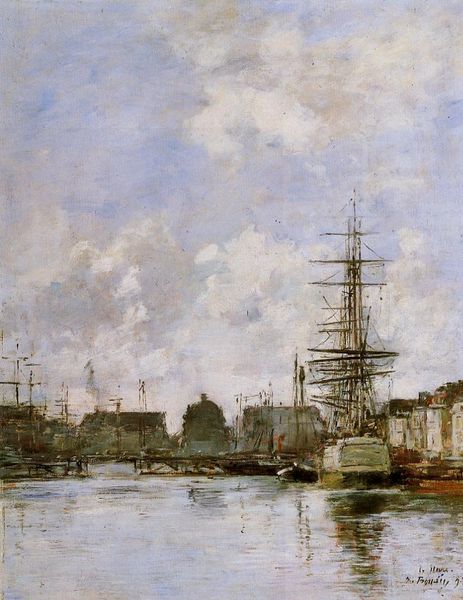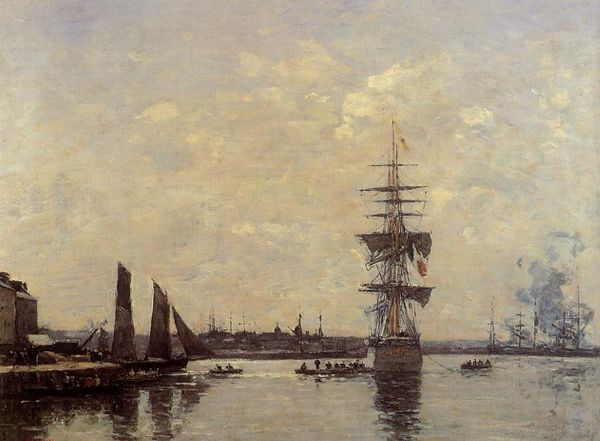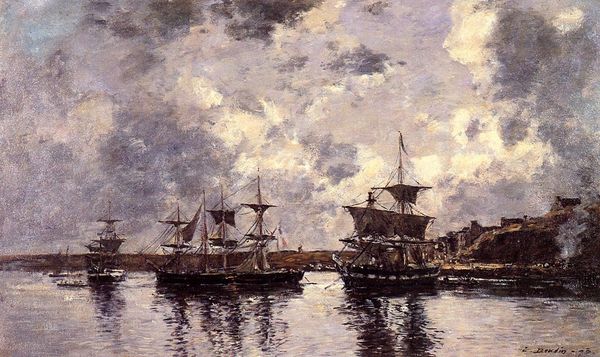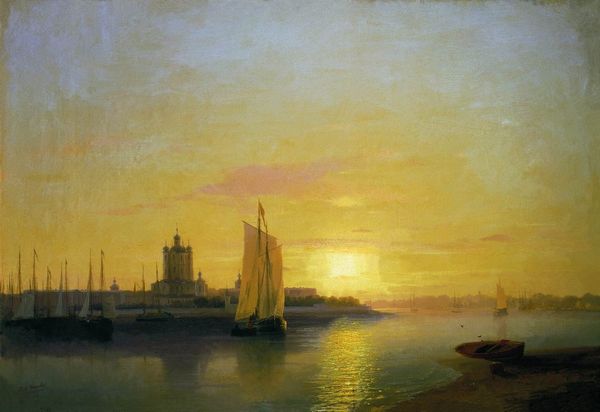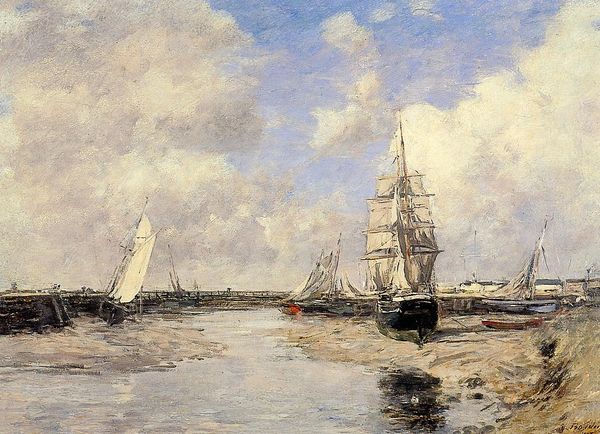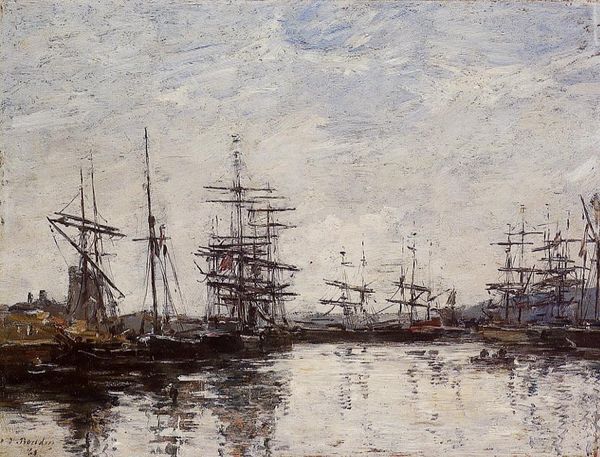
painting, plein-air, oil-paint
#
boat
#
sky
#
ship
#
painting
#
impressionism
#
plein-air
#
oil-paint
#
vehicle
#
landscape
#
impressionist landscape
#
oil painting
#
ocean
#
seascape
#
cityscape
#
sea
Copyright: Public domain
Curator: Let’s take a look at Eugène Boudin's "The Port of Le Havre at Sunset," created in 1882. He captures a scene awash with the day’s final light, an example of his dedication to plein-air painting. Editor: Immediately, the painting evokes a certain placidity, a stillness only disrupted by the soft strokes of color composing the sky. There’s a distinct lack of sharp lines; everything seems to melt into everything else. Curator: Indeed. Boudin was fascinated by capturing the ephemeral qualities of light and atmosphere. This work exemplifies the rise of maritime trade in France. Ports were vital arteries for colonial exploits and trade. Editor: Considering this historical context, I find myself particularly drawn to the verticality of the masts and the rigging against the broad horizontal stretch of the sea and sky. The ships appear caught, perhaps imprisoned. This creates tension and visual rhythm within the pictorial space. Curator: These visual elements echo the anxieties about imperial ventures. Ports, such as Le Havre, are locations of both progress and exploitation. The blurred effect that initially comes across as peaceful becomes slightly more uneasy as it highlights instability and fluidity, particularly when understood in relation to colonial exploitation and expansion. Editor: I concur. I appreciate your observation about the ships feeling “caught,” as the sky itself is active, dynamic. Consider how the painter has carefully placed strokes of color; it guides your eye upwards in contrast with the comparative calm of the water, and this is enhanced through tone and hue, not outline. Curator: Boudin offers us an entry point to consider the environmental impact of the expansion. This painting also acts as a record, subtly indicating what these industrial endeavors took from the communities that fostered them. Editor: By focusing so closely on the light and atmosphere, Boudin has given us something visually seductive while subtly evoking a critical framework when contextualized appropriately. Curator: Precisely, its artistic value lies in its capacity to open avenues for dialogue about the intersectional dimensions of culture and history. Editor: Ultimately, it invites us to look beyond the surface, and contemplate how visual forms articulate layers of social complexity.
Comments
No comments
Be the first to comment and join the conversation on the ultimate creative platform.
